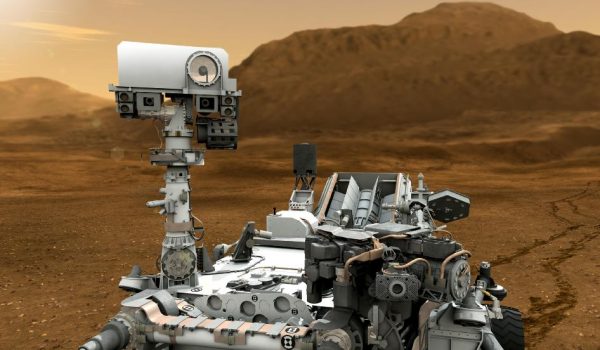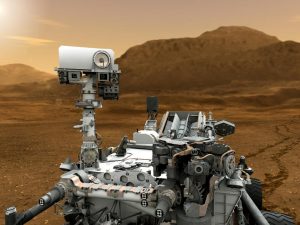

Curiosity rover has been sent to Mars to investigate planet’s past or present ability to sustain microbial life (Credits: NASA).
It’s been a week full of glitches in the space sector. As well as the series of faults that prevented Dragon from making its timely rendezvous with ISS on 2nd March, it has been reported that Curiosity and ESA’s ATV-4 have run into some difficulties.
On February 28th, the ground team for NASA’s Mars rover Curiosity at the Jet Propulsion Laboratory (JPL) has switched the rover to a safe mode in response to a memory issue.
“We switched computers to get to a standard state from which to begin restoring routine operations,” said Richard Cook, project manager for the Mars Science Laboratory at JPL.
The JPL team has switched the rover to a redundant onboard computer in response to a memory issue on the computer that had been active. The swap placed the rover into a safe mode, a minimal-activity precautionary status. Curiosity will be shifted from safe mode to operational status over the next few days after the team has resolved the issue that has affected operations. According to NASA, the issue was caused by a glitch in a flash memory linked to the now-inactive computer.
Curiosity, like most spacecraft, has a pair of redundant main computers. The redundancy provides backup if one system fails. Additionally, both computers, referred to as A-side and B-side, also have other redundant subsystems. Curiosity has been operating with its A-side computer since its EDL phase in August 2012 until February 28, 2013. However, as a consequence of the glitch, Curiosity is now operating on its B-side, as it did during part of the flight from Earth to Mars. JPL officials said that they are now resuming operation on the B-side and at the same time they are also trying to restore A-side as a fully operative backup.
The engineers found the glitch when the rover began exclusively sending current status information, and not recorded data. The status information was important to reveal that the computer had not switched to the usual daily “sleep” mode at the scheduled time. When JPL engineers ran a diagnostic in the testing simulation, they identified the fault in a corrupted memory location in the A-side computer.
Curiosity has now suspended its scientific investigation inside Gale Crater until the glitch is resolved.
While the Martian rover is struggling with a flash memory issue, another glitch is delaying the European ATV, dubbed Albert Einstein.
Initially planned for April 2013, the ATV-4 launch had to be delayed because of a glitch in an avionics box. The glitch, discovered during testing, will force a replacement and retesting of the box. There is no certain updated launch date because the box was still undergoing final testing on the day of the announcement on February 22. ESA has released no new information since.
ATV-4 arrived at the Guiana Space Center in September for a longer than usual launch campaign because the 20,000kg spacecraft will carry a full complement of water for the first time.


















































































































![A trajectory analysis that used a computational fluid dynamics approach to determine the likely position and velocity histories of the foam (Credits: NASA Ref [1] p61).](http://www.spacesafetymagazine.com/wp-content/uploads/2014/05/fluid-dynamics-trajectory-analysis-50x50.jpg)



Leave a Reply